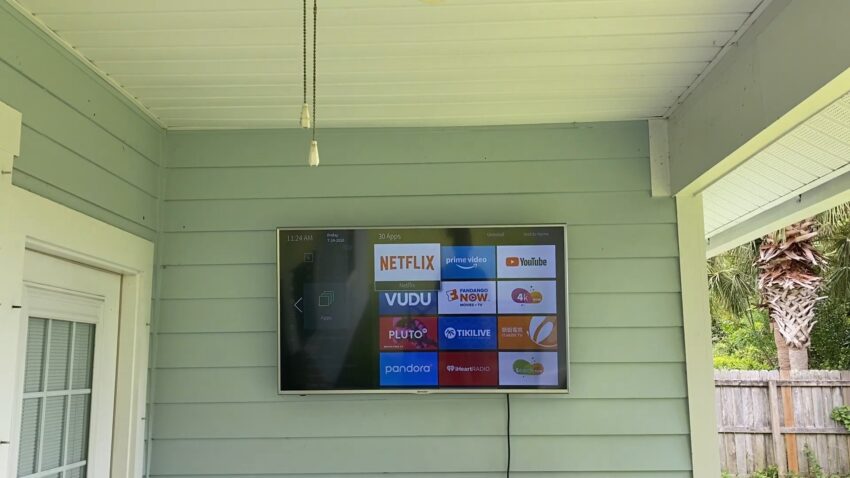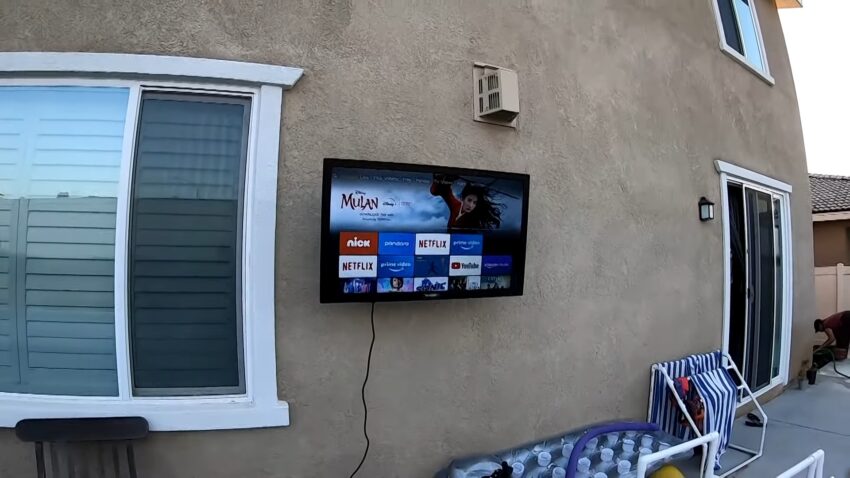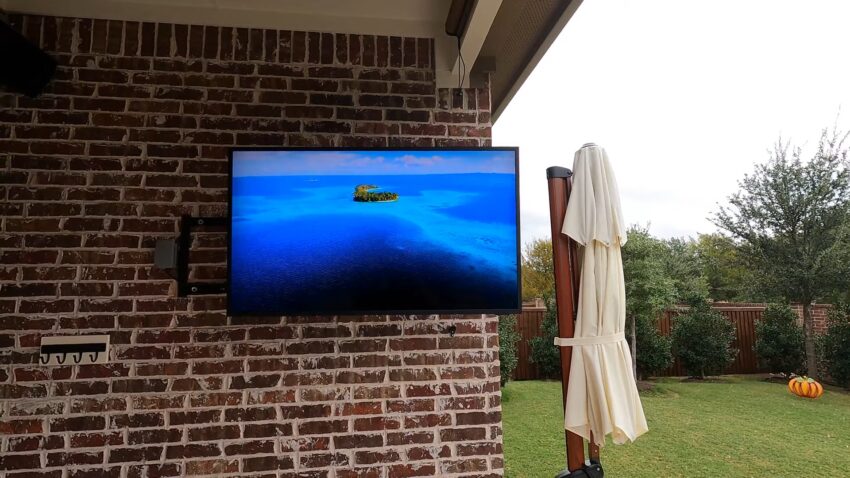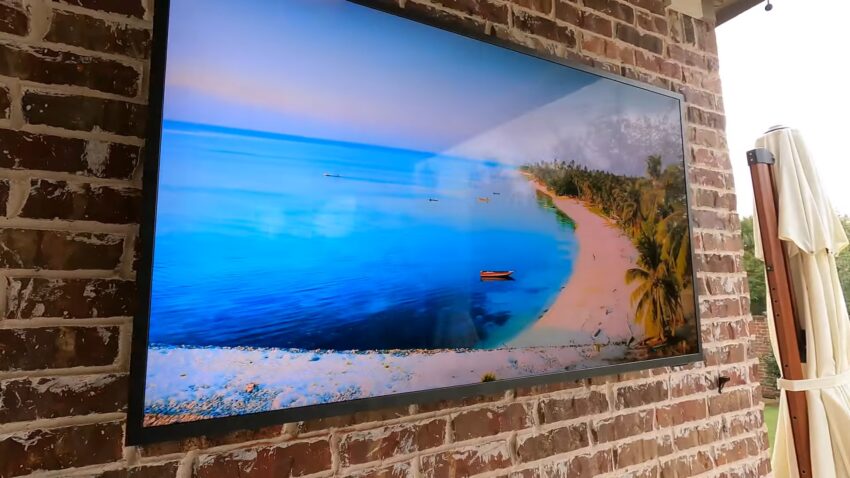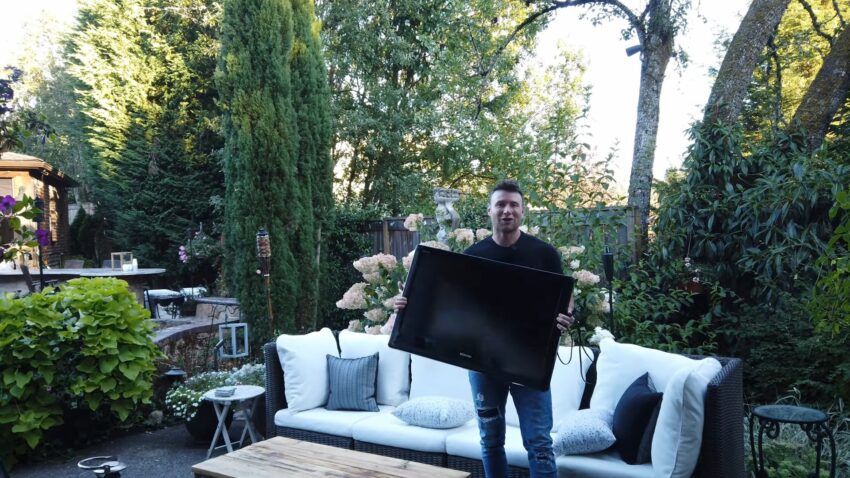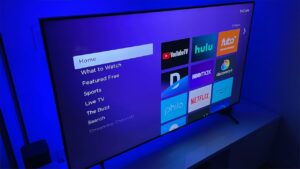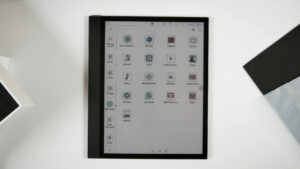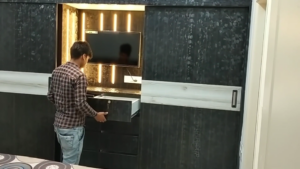The lines between indoor entertainment and the great outdoors are becoming increasingly blurred. Many individuals are captivated by the idea of extending their entertainment experiences to outdoor settings, from cozy backyard movie nights to lively patio sports-viewing parties.
The undeniable charm of basking in the natural ambiance while indulging in one’s favorite shows and films adds a unique dimension to our leisure moments.
As we entertain these delightful prospects, understanding the suitability of regular TVs for such environments becomes paramount.
Environmental Factors and Their Impact
Our environment plays a crucial role in shaping the performance and durability of many products and systems. Factors such as weather conditions, temperatures, and humidity can profoundly affect both natural and man-made structures, requiring careful consideration when planning and designing.
Recognizing these impacts ensures longevity and optimal functioning.
Weather Conditions
- Temperature Fluctuations: Regulars are not designed to handle extreme temperatures. Cold can affect the liquid crystal display (LCD), while excessive heat can damage internal components.
- Moisture and Humidity: Even if you’re not expecting rain, outdoor humidity can introduce moisture into your device, leading to potential short circuits or permanent damage.
- Sunlight: Direct exposure to sunlight can cause overheating. Additionally, the screen can become washed out and difficult to view in bright conditions.
Dust and Physical Damage
Outdoor areas are prone to dust, pollen, and other particles. These can clog the vents, leading to overheating or even attract insects. An outdoor setting increases the risk of accidental damage. From stray balls to curious animals, there are many unforeseen hazards.
Solutions and Alternatives
It’s imperative to have solutions that are not only effective but also sustainable. By exploring various alternatives, we can ensure that we select the most appropriate method or technology for the task at hand, optimizing outcomes and mitigating unforeseen consequences.
Outdoor TV Enclosures
These devices are designed to protect against moisture, temperature, and other environmental factors. They often come with fans, heaters, or thermostats to regulate temperature. Many have anti-glare front panels to improve screen visibility in bright conditions.
Outdoor TVs
Unlike regular, outdoor TVs are built to withstand the elements. They come with features like weatherproof casings and brighter screens for better visibility. While they offer peace of mind, outdoor TVs are notably more expensive than their regular counterparts.
Using a Projector
- Flexibility: Projectors can be set up when needed and stored indoors when not in use, reducing exposure to environmental factors.
- Screen Size: They offer the advantage of larger screen sizes, making them ideal for outdoor movie nights.
Longevity and Cost Implications
Using a regular TV outside often voids the manufacturer’s warranty. This means any damage incurred will come out of your pocket. Regular TVs used outdoors may require more frequent cleaning and checks to ensure they remain in working order.
Given the heightened risk of damage, you might find yourself replacing a regular TV more often than if it were used indoors. While an outdoor TV or enclosure might seem pricey initially, it could be more cost-effective in the long run when considering potential replacement and repair costs for regular TVs.
Outdoor TVs tend to retain their value better, given their specialized nature. On the other hand, a regular device used outside may have a diminished resale value due to potential wear and tear.
Connectivity and Setup Challenges
Seamless connectivity is more important than ever. Achieving this often comes with its own set of hurdles. Addressing setup and compatibility issues head-on ensures smoother integration and operation in the long run.
Signal Strength
- Distance from Router: If you’re planning to stream content, the further your device is from your home’s Wi-Fi router, the weaker the signal might be. This could result in buffering or reduced streaming quality.
- Interference: Outdoor setups might face interference from other electronic devices or physical barriers, affecting signal quality.
Cable Management
- Safety Concerns: Running power cables and other connections outdoors can pose a tripping hazard or become damaged due to environmental factors.
- Aesthetic Impact: Unsightly cables can detract from the ambiance of your outdoor entertainment area.
Remote Control Functionality
| Consideration | Details |
|---|---|
| Range Limitations | The effective range of your remote control might be reduced outdoors, especially if there are physical barriers. |
| Exposure | Like the TV, your remote is also susceptible to environmental damage if left outside. |
Audio Considerations
Sound quality and clarity can significantly influence the effectiveness and enjoyment of many systems. Factors such as acoustics, interference, and source quality must be evaluated and adjusted to ensure optimal audio experiences for end-users.
Sound Quality in Open Spaces
- Diffusion: Sound can easily get lost or diffused in open spaces, reducing the audio quality and volume you might be used to indoors.
- Environmental Noise: The sounds of nature, neighboring activities, or passing vehicles can interfere with your viewing experience.
Outdoor Audio Solutions
Investing in a good outdoor soundbar can enhance audio quality and volume. These are designed to withstand the elements and can be strategically placed for optimal sound. Bluetooth or Wi-Fi-enabled speakers can reduce the need for additional cabling.
Vulnerability of Outdoor Setups
When moving operations or systems outdoors, several unique challenges arise. From fluctuating weather conditions to potential security risks, understanding these vulnerabilities allows for better preparation and more robust protective measures.
Outdoor electronics, including TVs, can be tempting targets for thieves.
Security Measures
| Security Feature | Description |
|---|---|
| Mounting | Securely mount your device to reduce the risk of it being easily removed or stolen. |
| Surveillance | Consider installing security cameras or motion sensor lights as deterrents. |
| Locks and Cables | These can be used to physically secure your device to a structure. |
| Enclosures | Some outdoor TV enclosures come with locks, adding an extra layer of security. |
Check with your home insurance provider to see if outdoor electronics are covered. If not, consider purchasing additional coverage.
Aesthetic and Design Integration
By emphasizing aesthetic integration, we can ensure harmonious blends with surrounding environments and enhance user satisfaction
Blending with Outdoor Decor
An outdoor entertainment area should complement your existing outdoor decor. Consider the design, color, and size of the TV and how it fits with your patio furniture, plants, and other elements.
While the TV can be a central element, ensure it doesn’t overshadow the natural beauty of your outdoor space.
Custom Cabinets and Furniture
- Protection and Style: Custom-made cabinets can offer protection from the elements while integrating seamlessly with your outdoor design.
- Mobility: Consider furniture with wheels or mounts that allow for easy movement, so you can adjust the TV’s position based on the sun’s angle or the number of viewers.
Energy Consumption and Efficiency
Outdoor TVs are specifically designed to withstand external elements, but this resilience can impact their energy usage. Factors such as direct sunlight, varying temperatures, and longer operational hours can influence their consumption patterns.
It’s essential to select models with enhanced energy efficiency features to minimize power wastage and ensure optimal viewing experiences without compromising on sustainability.
Powering Outdoor Electronics
Regular TVs, when used outside, might consume more power, especially if they’re struggling with brightness in sunlit conditions. Outdoor TVs are often designed to be more energy-efficient in outdoor settings, adjusting to varying light conditions without excessive power consumption.
Extension Cords and Outdoor Outlets
- Safety: If you’re using extension cords, ensure they’re rated for outdoor use. Regular cords can deteriorate quickly outside, posing a fire risk.
- Convenience: Consider installing outdoor electrical outlets closer to your entertainment area to reduce the need for long cords and potential tripping hazards.
User Experience and Comfort
Ensuring smooth interfaces, intuitive controls, and pleasing interactions elevates the overall experience, leading to higher adoption and satisfaction rates. In this case, you can do it with:
- Positioning: The angle of the sun can cause glare on the screen, making it difficult to view. Ensure your device is positioned in a way that minimizes this, possibly with tilting mounts.
- Shade Solutions: Using umbrellas, pergolas, or other shading options can enhance visibility and protect viewers from direct sunlight.
- Comfort: Invest in comfortable outdoor seating that provides good support for extended viewing sessions.
- Viewing Height: Ensure seats are positioned at the right height relative to the device for a comfortable viewing angle.
- Ambient Lighting: While the TV will provide its own light, consider soft ambient lighting around the seating area to ensure safety and create a cozy atmosphere.
FAQ
Are there TVs designed specifically for outdoor use?
There are outdoor TVs that are built to be weather-resistant, brighter for outdoor visibility, and more durable for external conditions.
Will my regular TV’s warranty cover damages from outdoor use?
Most warranties for regular TVs won’t cover damages from conditions they aren’t designed for, including outdoor use. Always check your warranty details before making a decision.
Can insects or small critters damage my TV outdoors?
Yes, small insects can enter the vents or ports of regular TVs, potentially causing damage. Outdoor TVs are often designed to minimize such risks.
If I use a regular TV outside, how can I maximize its lifespan?
Limit its exposure to harsh conditions, use protective covers when not in use, and avoid using the TV during extreme temperatures or weather events.
Can I make my regular TV weatherproof?
While there are protective enclosures available that can shield your device from some elements, they might not provide comprehensive protection that outdoor TVs inherently offer.
The Bottom Line
Placing a regular TV outside presents a myriad of challenges, primarily stemming from environmental factors and the intrinsic design of indoor TVs. While it’s feasible in some controlled conditions, the risks often outweigh the benefits.
For those keen on outdoor entertainment, investing in a device specifically designed for outdoor conditions would be a prudent and more long-term solution.


